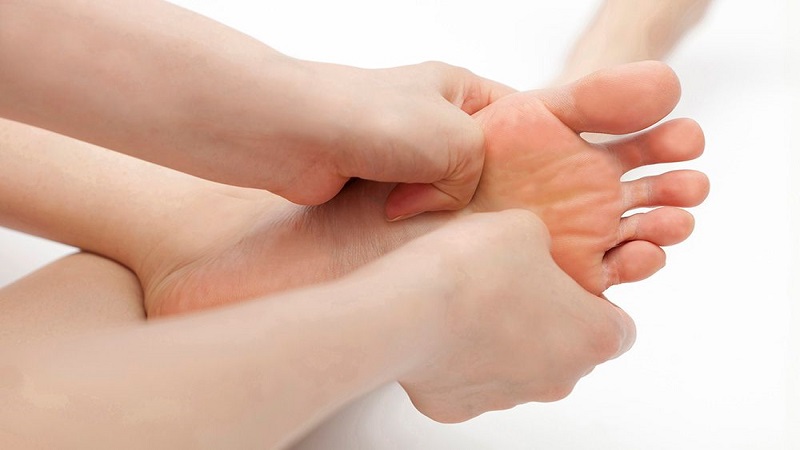It’s always the same story. You’re out for a walk, relaxing in bed, or halfway through a workout when — bam — your foot seizes up in a sharp, painful cramp. Foot cramps have a knack for striking at the most inconvenient times, and once they hit, all you can do is wait it out and hope it doesn’t happen again.
The occasional cramp might not be a big deal, but if you’re experiencing them frequently, especially without clear cause, it’s worth digging into the reasons why. Sometimes, persistent foot cramps can signal a deeper issue with circulation, nerve health, or biomechanics — and that’s when it may be time to check in with a qualified podiatrist Wollondilly locals trust to get to the root of the problem.
So, what causes foot cramps, and more importantly, what can you do to prevent them from happening when you need your feet to cooperate?
What Exactly Is a Foot Cramp?
Foot cramps are sudden, involuntary contractions of the muscles in your foot or toes. They can last anywhere from a few seconds to several minutes and range from mildly uncomfortable to downright agonizing. Afterward, your foot might feel sore, tight, or tender.
Most commonly, cramps affect the arch of the foot, the ball of the foot, or the toes — particularly during or after activity, or during the night.
Why Do They Happen?
There’s no single cause behind foot cramps, but several common triggers include:
1. Dehydration
Even mild dehydration can affect muscle function. If your fluid intake is low, especially in hot weather or after exercise, your muscles are more prone to spasms.
2. Electrolyte Imbalance
Your body relies on minerals like magnesium, calcium, sodium, and potassium to maintain proper muscle function. If those levels drop too low, cramping can occur.
3. Overuse or Fatigue
Spending long hours on your feet, standing on hard surfaces, or wearing unsupportive shoes can tire out your foot muscles, making them more likely to cramp.
4. Poor Circulation
Limited blood flow to the feet can cause muscles to cramp. This is more common in people with diabetes, vascular conditions, or who sit for long periods.
5. Tight or Weak Muscles
Muscles that are too tight — especially in the calves or arches — or muscles that are underused and weak can both contribute to spasms.
6. Nerve Issues
Compressed or irritated nerves in the spine or legs can affect how your muscles contract. If cramps are frequent and come with tingling or numbness, this could be a sign of a nerve-related issue.
Quick Relief Tips When a Cramp Hits
When you’re in the middle of a cramp, you want it gone — fast. Try the following for quick relief:
- Stretch the cramped area: For foot cramps, pull your toes gently upward toward your shin until the cramp eases.
- Massage the muscle: Use your thumbs or knuckles to apply gentle pressure and work out the tightness.
- Apply heat or cold: A warm compress can soothe tight muscles, while ice may help with inflammation if cramping is frequent.
- Stand up and walk it off: Putting weight on your foot and gently walking around can encourage the cramp to release.
Long-Term Prevention Strategies
If foot cramps are becoming a regular occurrence, taking steps to prevent them is key. Here’s what helps:
✅ Stay Hydrated
Drink plenty of water throughout the day, especially if you’re exercising or spending time in the sun. Include hydrating foods like fruits and vegetables as well.
✅ Replenish Electrolytes
Make sure your diet includes plenty of magnesium, potassium, and calcium — all crucial for muscle function. Bananas, leafy greens, nuts, seeds, and dairy are great sources.
✅ Stretch Regularly
Stretch your feet and calves daily, especially if you’re active or wear tight footwear. A few minutes of stretching in the morning and before bed can make a big difference.
✅ Wear Supportive Shoes
Footwear matters more than you think. Choose shoes with proper arch support and cushioning, especially if you stand or walk for long periods. Consider orthotics if you have flat feet or high arches.
✅ Strengthen Your Feet
Foot-strengthening exercises — like toe curls, marble pickups, or balancing on one foot — help build endurance and reduce fatigue in the small muscles of the feet.
When Should You See a Professional?
While occasional foot cramps are usually harmless, there are times when you shouldn’t ignore them. You should consider seeing a podiatrist if:
- Cramps happen frequently or daily
- They interrupt your sleep
- They’re accompanied by numbness, tingling, or swelling
- They persist even after making lifestyle changes
- You have underlying health conditions like diabetes or circulation issues
A professional assessment can help identify any biomechanical or medical factors contributing to the problem — and put a proper treatment plan in place so you can stop dreading that next cramp.
The Bottom Line
Foot cramps are frustrating, painful, and all too common — but they’re also manageable with a few simple changes. Stay hydrated, keep your muscles healthy, and don’t ignore signs that something deeper might be going on.
Because your feet are carrying you through life — and they deserve to feel good while doing it
